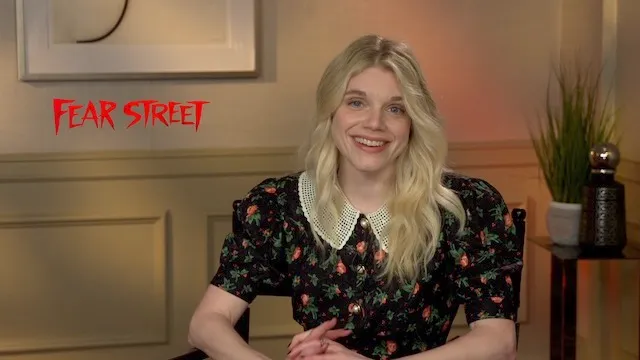Netflix’s Fear Street trilogy continues this week with the release of Fear Street Part 2: 1978 today. Taking place at a summer camp, the film follows a group of Shadysiders as they discover a terrible curse that haunts their town. The second streaming release stars Sadie Sink, Emily Rudd, Ryan Simpkins, McCabe Slye, Gillian Jacobs, Matthew Zuk, and more.
“Shadyside, 1978. School’s out for summer and the activities at Camp Nightwing are about to begin,” reads the official synopsis. “But when another Shadysider is possessed with the urge to kill, the fun in the sun becomes a gruesome fight for survival.”
ComingSoon Editor-in-Chief Tyler Treese spoke to Fear Street director Leigh Janiak about the trilogy’s themes, making each film feel unique, and the great licensed soundtracks. Check out the video interview below or read the full transcript.
Tyler Treese: I was really impressed by how each film feels unique and it plays to its time period really well. How difficult was it to make sure each felt unique to that sort of sub-genre of horror while also making sure that the core story was being told and that the connective tissue is all there?
Leigh Janiak: It was very challenging, but it was also really, really satisfying and fun as a filmmaker. Then also as a movie lover, to be able to kind of look back at these decades, that all had kind of amazing slasher movies and say, how can I pay homage? How can I send my love letter? Then also, like you said, keep our core kind of 90s storyline propelling things forward. So it really just ended up in always coming back to the characters, coming back to the experience of kind of our love story with Deena and Sam and figuring out how, how everything could be anchored around that as we drove forward.
The music choices for the time period are just so fantastic and it really makes for a fun watch. What went into the selection-making process as it comes to music?
The music actually is one of the earliest things that kind of existed. So before even the script, I had made playlists when I was pitching the project. I built on those playlists and we played them when we were figuring out the writing and the breaking of the story. I continued to add to the playlist. When I was casting, I shared it with cast. I shared it with crew. I listened to it on my way to set. It was just kind of like this perfect way to be put exactly back in that time period, and kind of remember that tonal place that we wanted to live. Because I think that when you’re on set, you don’t have music, you don’t have sound, you don’t have anything, but having that music [and] thinking about it in your ear, you’re reminded of this is how I want it to feel.
I was more of a Goosebumps kid rather than Fear Street. Were there any killers from the books that were included and were there any Easter eggs that more keen-eyed fans will find out?
There weren’t any killers that we directly took, but we basically kind of borrowed things with the Goode family, the Fier family, the idea of Shadyside as this town where these bad things happen, exist in the books. It was very much about having kind of preserving the fun and the spirit of the Fear Street books, which I grew up reading and loved. So that was kind of the main thing. The books have a very important place in the trilogy, as far as they’re able to save the characters more than once. This is all that I’ll say.
The films tackle a lot of societal issues that I wasn’t really expecting. Police planting evidence on black men. We go into the class structure, sexism, and homophobia. How important was it to have that in the film?
It was really, really important. It was kind of the reason that I felt like we could make Fear Street now. In so far as like I said, there are amazing slasher movies that took place in the 90s, in the 70s, in the 80s, but they always kind of looked the same as far as their cast of characters and who those characters were. I thought the great part about Fear Street and us being able to create these three movies was that we were able to kind of let characters be protagonists, be heroes that normally would die very quickly in horror movies. So we could tackle things like systemic oppression and police violence and police planting evidence. Kind of like you said, homophobia, all of the things, but it was baked into this idea of this is the central kind of conflict of Shadysiders and Sunnyvale.
Thanks to Netflix for setting up the Leigh Janiak interview. The first two installments of Fear Street are now streaming.










